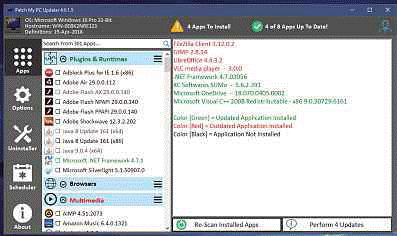

Heimdal™ Patch and Asset Management is designed to enable organizations to view, manage and update their software inventory from anywhere in the world in order to ensure all software is up-to-date, secure against any vulnerabilities and fully compliant. Their solutions are currently deployed in more than 45 countries and secure more than two million endpoints, for over 10,000 enterprise customers. Heimdal™ is a quickly growing cybersecurity company headquartered in Copenhagen, Denmark. The platform supports deployment and patch management for any Microsoft, Linux, third-party and custom-made software. Heimdal™ Patch and Asset Management is a fully featured patch management solution, enabling organizations to seamlessly deploy and patch software via a modern, cloud-based admin console that provides visibility and control across all software inventories. The Top Patch Management Software include: We’ll give you some background information on the patch management vendors and the key features of the solutions themselves, as well as the type of customer that they are most suitable for. These solutions offer a range of capabilities, including vulnerability scanning, automated patch deployment, reporting, and cross-platform support. In this article, we’ll explore the top patch management tools designed to help you manage security updates across your network’s endpoints.

It also enables IT teams to manage the entire process centrally, giving them more visibility into device security and operational performance. This means that admins can schedule patches to be rolled out at a time when users aren’t online, to cause minimum downtime. Patch management vendors offer patching tools that help IT teams to monitor endpoints and software for required updates, then automatically distribute those updates according to a pre-defined schedule. Once a cybercriminal identifies a weakness in an application or device, they can use that weakness like a back door to access your company’s data. The exploitation of undisclosed or unpatched vulnerabilities is one of the leading ways in which cybercriminals carry out zero-day attacks. If a vulnerability remains unpatched, it could cause systems to run ineffectively or, worse, it could be exploited by a cybercriminal trying to gain access to your company’s data. Patch management is the process of monitoring all the devices and software applications connected to your network for vulnerabilities, then applying the correct patch to any vulnerabilities you discover. A patch, also called a bug fix, is a sequence of code designed to update, improve, or fix a computer program or application.


 0 kommentar(er)
0 kommentar(er)
